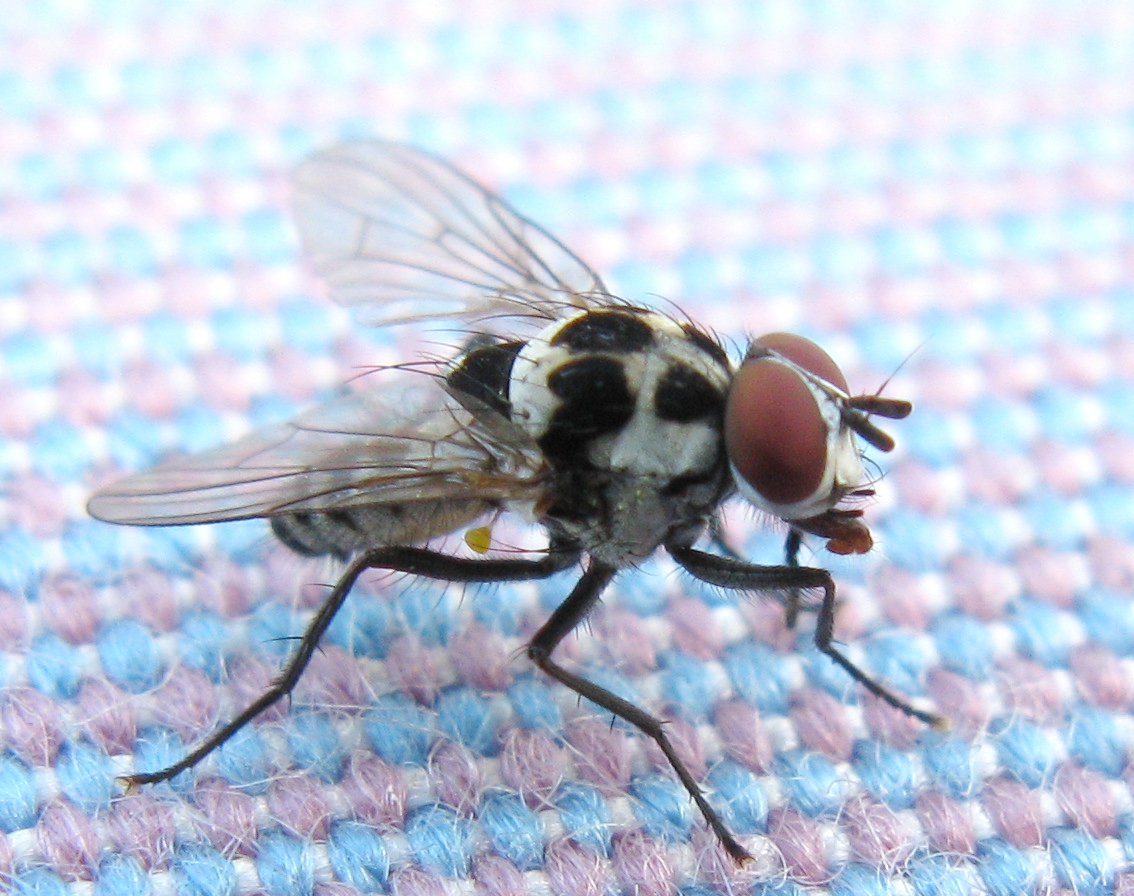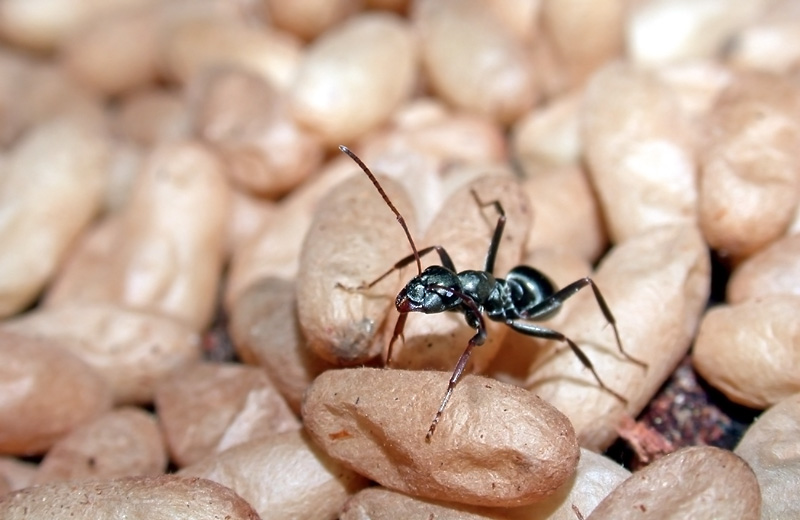|
1877 In Paleontology
Arthropods Newly named insects Fish Non-dinosaurian reptiles Dinosaurs ''Laelaps trihedrodon'', Cope criticizes ''Dryptosaurus'' O. W. Lucas collected the first remains of what would later in the year be named ''Laelaps trihedrodon'' from Quarry I of the Saurian Hill at Garden Park, Colorado."Introduction," Chure (2001) page 11. Edward Drinker Cope would describe the material later in the year in a short paper titled "On a carnivorous dinosaurian from the Dakota beds of Colorado."Cope (1887) pages 805-806. The "Dakota beds" he references are actually Morrison Formation strata. Cope claims to have a skeleton of unspecified completeness on which to establish the new species, but only describes a partial dentary which has 5 successional teeth, 2 functional teeth, and one tooth missing from its socket. All of the preceding material has since been lost to science with the exception of 5 broken, partial tooth crowns."Description of 5780," Chure (2001) page 11. From the now missi ... [...More Info...] [...Related Items...] OR: [Wikipedia] [Google] [Baidu] |
Anthomyia Burgessi
''Anthomyia'' is a genus of flies in the family Anthomyiidae. They look rather like small houseflies, but commonly have conspicuous black-and-white patterning. This appears to be a mild form of aposematic Aposematism is the advertising by an animal to potential predators that it is not worth attacking or eating. This unprofitability may consist of any defences which make the prey difficult to kill and eat, such as toxicity, venom, foul taste o ... coloration, though they do not appear to be distasteful unless they have eaten something offensive to the predator and have loaded their guts with it. Species References Anthomyiidae Articles containing video clips Schizophora genera Taxa named by Johann Wilhelm Meigen {{Muscoidea-stub ... [...More Info...] [...Related Items...] OR: [Wikipedia] [Google] [Baidu] |
Mycetophilinae
Mycetophilinae is a subfamily of fungus gnats in the family Mycetophilidae. There are more than 30 genera and 2,000 described species in Mycetophilinae. There are two tribes, Exechiini and Mycetophilini. Genera These 34 genera belong to the subfamily Mycetophilinae: *''Acadia'' *'' Acnemia'' *'' Acomoptera'' *'' Acomopterella'' *'' Acrodicrania'' *'' Adicroneura'' *'' Aglaomyia'' Vockeroth, 1980 *'' Allactoneura'' *''Allocotocera'' *'' Allodia'' Winnertz, 1863 *''Allodiopsis'' Tuomikoski, 1966 *''Anaclileia'' *'' Anatella'' Winnertz, 1863 *'' Aneura'' *''Anomalomyia'' *''Apolephthisa'' *''Arachnocampa'' *'' Asindulum'' *'' Aspidionia'' Colless, 1966 *''Ateleia'' *'' Austrosciophila'' *'' Austrosynapha'' *'' Azana'' *'' Baeopterogyna'' *'' Boletina'' *'' Brachypeza'' Winnertz, 1863 *''Brevicornu'' Marshall, 1896 *'' Caladonileia'' *'' Cawthronia'' *'' Cerotelion'' *'' Clastobasis'' *'' Coelophthinia'' *'' Coelosia'' *'' Cordyla'' Meigen, 1803 *'' Creagdhubhia'' *'' Cyclone ... [...More Info...] [...Related Items...] OR: [Wikipedia] [Google] [Baidu] |
Dolichoderus Obliteratus 1890 Pl3 Fig25
''Dolichoderus'' is a genus of ants found worldwide. Taxonomy The ants of the Neotropical genus ''Monacis'' were revised in 1959 by Kempf. However, Brown in 1973 and G. C. Wheeler and J. Wheeler in 1973 and 1976 considered both ''Monacis'' and ''Hypoclinea'' to be junior synonyms of ''Dolichoderus''. Description The type species is ''Dolichoderus attelaboides''. Worker ants in this genus have a body length that is typically about four millimetres and can be recognised by their thick, inflexible and strongly sculptured integument. There is a flange on the underside of the head near the base of the mandibles which is saw-like in some species. The longitudinal suture in the central plate of the metathorax is deeply impressed. The propodeum or first abdominal segment has the posterior face distinctly concave when viewed from the side. [...More Info...] [...Related Items...] OR: [Wikipedia] [Google] [Baidu] |
1893 In Paleontology
Arthropods Newly named insects Fish Newly named Ray-finned fish Archosauromorphs Newly named dinosaurs Plesiosaurs New taxa Synapsids Non-mammalian References {{portal, Paleontology ... [...More Info...] [...Related Items...] OR: [Wikipedia] [Google] [Baidu] |
Dolichoderus Obliteratus
''Dolichoderus obliteratus'' is an extinct species of Miocene ant in the genus ''Dolichoderus''. Described by Samuel Hubbard Scudder in 1877, only a fossilised wing of the species was found in Canada Canada is a country in North America. Its ten provinces and three territories extend from the Atlantic Ocean to the Pacific Ocean and northward into the Arctic Ocean, covering over , making it the world's second-largest country by tot ....Scudder, S. H. 1877a. Appendix to Mr. George M. Dawson's report. The insects of the Tertiary beds at Quesnel. ''Rep. Prog. Geol. Surv. Can.'' 1875-1876: 266-280 (page 267, wing described) References † Miocene insects Fossil taxa described in 1877 † Fossil ant taxa {{Dolichoderus-stub ... [...More Info...] [...Related Items...] OR: [Wikipedia] [Google] [Baidu] |
Dolichoderinae
Dolichoderinae is a subfamily of ants, which includes species such as the Argentine ant (''Linepithema humile''), the erratic ant, the odorous house ant, and the cone ant. The subfamily presents a great diversity of species throughout the world, distributed in different biogeographic realms, from the Palearctic, Nearctic, Afrotropical region and Malaysia, to the Middle East, Australian, and Neotropical regions. This subfamily is distinguished by having a single petiole (no post-petiole) and a slit-like orifice, from which chemical compounds are released. Dolichoderine ants do not possess a sting, unlike ants in some other subfamilies, such as Ponerinae and Myrmicinae, instead relying on the chemical defensive compounds produced from the anal gland. Of the compounds produced by dolichoderine ants, several terpenoids were identified including the previously unknown iridomyrmecin, isoiridomyrmecin, and iridodial. Such compounds are responsible for the smell given off by ants of ... [...More Info...] [...Related Items...] OR: [Wikipedia] [Google] [Baidu] |
Hypoclinea Obliterata
''Dolichoderus'' is a genus of ants found worldwide. Taxonomy The ants of the Neotropical genus ''Monacis'' were revised in 1959 by Kempf. However, Brown in 1973 and G. C. Wheeler and J. Wheeler in 1973 and 1976 considered both ''Monacis'' and ''Hypoclinea'' to be junior synonyms of ''Dolichoderus''. Description The type species is ''Dolichoderus attelaboides''. Worker ants in this genus have a body length that is typically about four millimetres and can be recognised by their thick, inflexible and strongly sculptured integument. There is a flange on the underside of the head near the base of the mandibles which is saw-like in some species. The longitudinal suture in the central plate of the metathorax is deeply impressed. The propodeum or first abdominal segment has the posterior face distinctly concave when viewed from the side. [...More Info...] [...Related Items...] OR: [Wikipedia] [Google] [Baidu] |
Formica Arcana 1890 Pl3 Fig24
''Formica'' is a genus of ants of the family Formicidae, commonly known as wood ants, mound ants, thatching ants, and field ants. ''Formica'' is the type genus of the Formicidae, and of the subfamily Formicinae. The type species of genus ''Formica'' is the European red wood ant '' Formica rufa''. Ants of this genus tend to be between 4 and 8 mm long. Habitat As the name wood ant implies, many ''Formica'' species live in wooded areas where no shortage of material exists with which they can thatch their mounds (often called anthills). One shade-tolerant species is '' F. lugubris''. However, sunlight is important to most ''Formica'' species, and colonies rarely survive for any considerable period in deeply shaded, dense woodland. The majority of species, especially outside the ''F. rufa'' species group, are inhabitants of more open woodlands or treeless grassland or shrubland. In North America, at least, these habitats had a long history of frequent landscape-scale fire ... [...More Info...] [...Related Items...] OR: [Wikipedia] [Google] [Baidu] |
Formicinae
The Formicinae are a subfamily within the Formicidae containing ants of moderate evolutionary development. Formicines retain some primitive features, such as the presence of cocoons around pupae, the presence of ocelli in workers, and little tendency toward reduction of palp or antennal segmentation in most species, except subterranean groups. Extreme modification of mandibles is rare, except in the genera ''Myrmoteras'' and ''Polyergus''. However, some members show considerable evolutionary advancement in behaviors such as slave-making and symbiosis with root-feeding hemipterans. Finally, all formicines have very reduced stings and enlarged venom reservoirs, with the venom gland, specialized (uniquely among ants) for the production of formic acid. All members of the Formicinae "have a one-segmented petiole in the form of a vertical scale". Identification Formicine ants have a single node-like or scale-like petiole (postpetiole entirely lacking) and the apex of the abdom ... [...More Info...] [...Related Items...] OR: [Wikipedia] [Google] [Baidu] |
Formica Arcana
''Formica'' is a genus of ants of the family Formicidae, commonly known as wood ants, mound ants, thatching ants, and field ants. ''Formica'' is the type genus of the Formicidae, and of the subfamily Formicinae. The type species of genus ''Formica'' is the European red wood ant '' Formica rufa''. Ants of this genus tend to be between 4 and 8 mm long. Habitat As the name wood ant implies, many ''Formica'' species live in wooded areas where no shortage of material exists with which they can thatch their mounds (often called anthills). One shade-tolerant species is '' F. lugubris''. However, sunlight is important to most ''Formica'' species, and colonies rarely survive for any considerable period in deeply shaded, dense woodland. The majority of species, especially outside the ''F. rufa'' species group, are inhabitants of more open woodlands or treeless grassland or shrubland. In North America, at least, these habitats had a long history of frequent landscape-scale fire ... [...More Info...] [...Related Items...] OR: [Wikipedia] [Google] [Baidu] |






